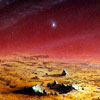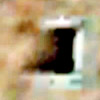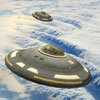An Astral Flight To Mars
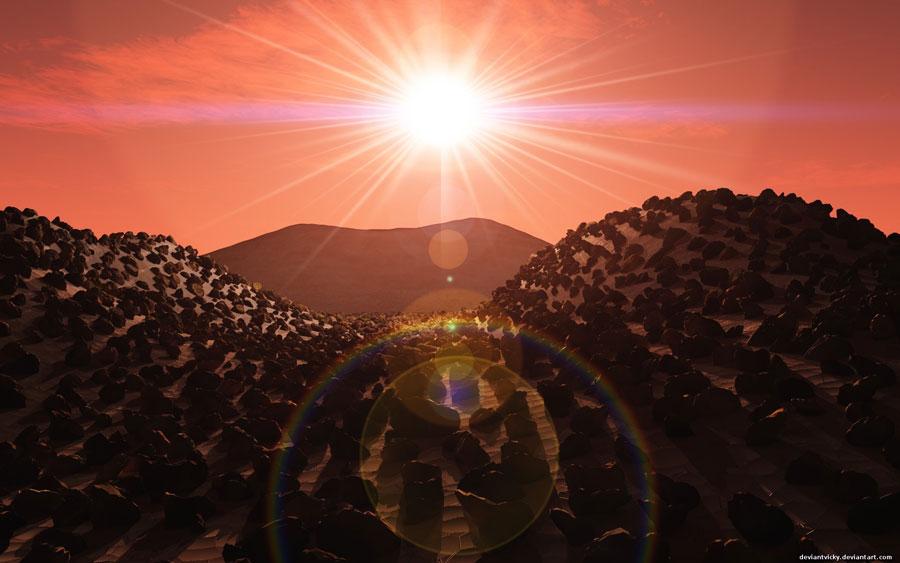 “Now I w
“Now I w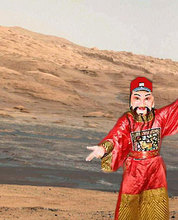 ill contact my Martian guide and take an astral flight through space, and see just how it is that man lives on the red planet. Almost immediately a very distinguished looking man stands before me; he is Nur El, a man of high position and esteem from one of the Martian cities. He is dressed in a very brilliant red suit. The coat is long, almost to the knees, with loose fitting pantaloons. On his head is a red hat with a square-shaped brim, which is turned up on four sides.
ill contact my Martian guide and take an astral flight through space, and see just how it is that man lives on the red planet. Almost immediately a very distinguished looking man stands before me; he is Nur El, a man of high position and esteem from one of the Martian cities. He is dressed in a very brilliant red suit. The coat is long, almost to the knees, with loose fitting pantaloons. On his head is a red hat with a square-shaped brim, which is turned up on four sides.
Our trip there is a matter of split seconds as no craft is used or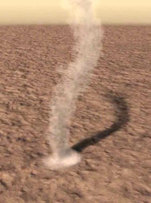 needed. Arriving on the surface of Mars, we are at once aware of the extremely rugged terrain, rocky hills and sandy wastes that stretch out endlessly around us. There are many peculiar whirling dust clouds all about. Nur El explains that the ionosphere is very thin, which leaves the surface almost unprotected from the various beta, gamma, and cosmic rays. This high concentration of rays ionizes the very rare and gaseous atmosphere, and together with the thermal currents, creates terrific dust storms. There is also a very thinly divided dust layer on the ionosphere, which helps create the reddish appearance of the planet. There are a number of volcanoes, three of which are of major size; one of these was just barely visible on the horizon trailing a thin wisp of smoke from its truncated cone.
needed. Arriving on the surface of Mars, we are at once aware of the extremely rugged terrain, rocky hills and sandy wastes that stretch out endlessly around us. There are many peculiar whirling dust clouds all about. Nur El explains that the ionosphere is very thin, which leaves the surface almost unprotected from the various beta, gamma, and cosmic rays. This high concentration of rays ionizes the very rare and gaseous atmosphere, and together with the thermal currents, creates terrific dust storms. There is also a very thinly divided dust layer on the ionosphere, which helps create the reddish appearance of the planet. There are a number of volcanoes, three of which are of major size; one of these was just barely visible on the horizon trailing a thin wisp of smoke from its truncated cone.
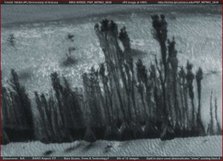 It was also explained that as Mars has only seven degrees axis inclination, there is not much of a seasonal change. Water is very scarce on this arid planet; most of the precipitation falls at the poles. Vegetation is scarce too. There are a few varieties of prickly, cacti-looking plants. Also, near the polar ice caps grows a very luxuriant, green alga-like plant that follows the melting snow line. This spongy growth often attains a height, or depth, of forty to fifty feet. It appears and disappears with the season as it grows with tremendous rapidity, and it also disintegrates very fast.
It was also explained that as Mars has only seven degrees axis inclination, there is not much of a seasonal change. Water is very scarce on this arid planet; most of the precipitation falls at the poles. Vegetation is scarce too. There are a few varieties of prickly, cacti-looking plants. Also, near the polar ice caps grows a very luxuriant, green alga-like plant that follows the melting snow line. This spongy growth often attains a height, or depth, of forty to fifty feet. It appears and disappears with the season as it grows with tremendous rapidity, and it also disintegrates very fast.
There are also a number of species of lizards, reptiles, and some insects whose hard shells have 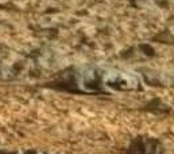 enabled them to weather the extreme atmospheric conditions. Among them are giant ants that walk semierect on the two hind feet. The guide tells me these are mutants that were accidentally produced from a small ant in an atomic experiment ages ago. They are similar to humans in a very low state of intelligence, and at one time it became necessary to make war on them as they became so numerous and large. These strange ant creatures average two to four feet in height and live in rocky caves.
enabled them to weather the extreme atmospheric conditions. Among them are giant ants that walk semierect on the two hind feet. The guide tells me these are mutants that were accidentally produced from a small ant in an atomic experiment ages ago. They are similar to humans in a very low state of intelligence, and at one time it became necessary to make war on them as they became so numerous and large. These strange ant creatures average two to four feet in height and live in rocky caves.
We did not tarry long on the surface. I followed my guide to a rather strange looking rock. Then, taking a small whistle from his coat pocket, he blew one note, and although I heard nothing, the rock immediately swung open disclosing a car-like elevator. We entered and after the door closed, I had the familiar dropping sensation of our own modern elevators. The trip down took but a few seconds, and upon stopping, I stepped forth into what was my first glimpse of a Martian city.
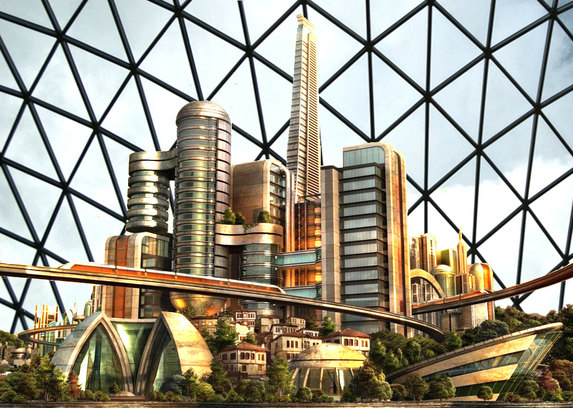 I was immediately impressed by the soft white light that seemed to come from every where. We were standing near the entrance of a large tube. On Mars the cities are all underground and are connected together by huge oval metal tubes, which are from three to five hundred feet in diameter. There are monorail cars as long as our Pullman trains, which glide silently and very swiftly from one city to another. the bottoms of these immense tubes are used for parks, growing foodstuffs, and innumerable small manufacturing plants.
I was immediately impressed by the soft white light that seemed to come from every where. We were standing near the entrance of a large tube. On Mars the cities are all underground and are connected together by huge oval metal tubes, which are from three to five hundred feet in diameter. There are monorail cars as long as our Pullman trains, which glide silently and very swiftly from one city to another. the bottoms of these immense tubes are used for parks, growing foodstuffs, and innumerable small manufacturing plants.
Because of the great distances between the cities, these tubes have been built only partially submerged. There are emergency air locks and bulkheads at the ends where they connect to the 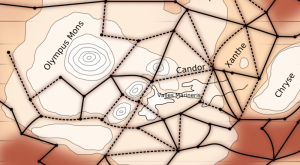 domes; other safety and precautionary measures are used to protect the cities and tunnels in case of breakdowns or outside attack. It is these tubes that have confused the astronomers on the earth. Some believe them to be canals, but there are also other theories.
domes; other safety and precautionary measures are used to protect the cities and tunnels in case of breakdowns or outside attack. It is these tubes that have confused the astronomers on the earth. Some believe them to be canals, but there are also other theories.
The shifting desert sands often cover or uncover them, which leads to further confusion inasmuch as they seem to appear and disappear.
Turning about and looking down into the city is an unforgettable experience. Like all cities on Mars, is built on the floor of a huge metal dome. These domes are sometimes four or five miles in diameter, and up to three thousand feet high. They are constructed of huge curved trusses of a whitish metal, seemingly of a magnesium compound.
These trusses are covered with a metal top and bottom, and the space between is filled with a plastic foam similar to the construction of the houses. this also gives added protection from the various cosmic rays as well as sealing in the precious air supply. Underneath the roof is an inner shell or a second false shell that is composed of sheets of pale blue plastic. This is suspended from brackets, from the dome, at a distance of about six feet; in this space are the many thousands of fluorescent tubes which make up the lighting system. They reflect downward the soft radiant light which I first noticed. I was told this light is very similar to a modified sunlight, and it is very healthful and stimulating to plant life as well as to the people. As these domes are built in the bottom of excavations, the sands soon drift over them and cover them up, giving added protection from the strong surface rays.” – Excerpt from The Truth About Mars
Posted in Book Excerpts, Life On Other Worlds, The Truth About Marswith comments disabled.


